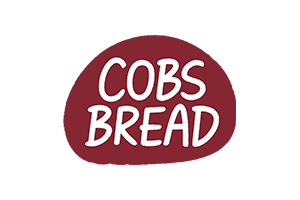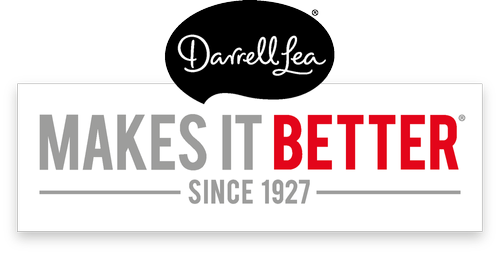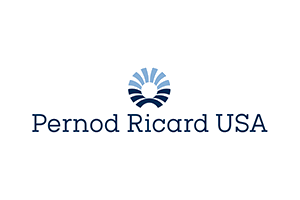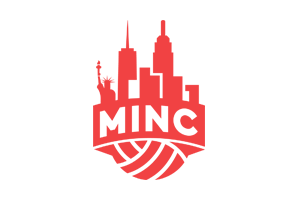Welcome! If you're thinking about working in the United States, you'll need to navigate the various types of work visas available. But don't worry, we've got you covered. Let's dive into the fascinating world of US work visas, and hopefully make your journey a little less daunting.
The Basics: Understanding US Work Visas
Before we get into the nitty-gritty, let's start with the basics. A work visa is a legal authorization that allows a non-U.S. citizen to work in the United States for a specific period. There are several types of work visas, each tailored to different professional needs and situations.
Temporary Nonimmigrant Visas
There are several kinds of temporary nonimmigrant visas. These are designed for individuals who wish to work in the U.S. for a limited period. They're typically tied to a specific employer or job, and they have a set expiration date.
Temporary Worker Visa Categories
Temporary worker visas come in various flavors, depending on the type of work you'll be doing. They range from H-1B visas for specialty occupations to O visas for individuals with extraordinary abilities or achievements. We'll dive deeper into each category in the following sections.
Understanding the Visa Issuance Fee
In some cases, after your work visa is approved, you may be required to pay a visa issuance fee. This fee is based on reciprocity and varies depending on your nationality. It's essential to check the U.S. Department of State's website to determine if a visa issuance fee applies to your specific situation.
From Temporary Worker to Permanent Residence
While temporary work visas are designed for a limited duration, some workers may decide they'd like to stay in the U.S. long-term. In such cases, obtaining permanent residence (also known as a Green Card) is an option worth considering. Keep in mind that the process for obtaining permanent residence is separate from the temporary work visa process and may require meeting additional eligibility criteria.
Navigating the World of Work Visas
The U.S. offers a wide range of work visas to suit various employment situations. As you explore your options, it's essential to understand the specific requirements and limitations of each visa type. Remember, the key to a successful application is thorough research and preparation.
Spotlight on the E3 Visa
The E3 visa is specifically designed for Australian citizens who wish to work in a specialty occupation in the U.S. Similar to the H-1B visa, the E3 visa requires applicants to have a bachelor's degree or higher in their field. If you're an Australian citizen seeking to work in the U.S., the E3 visa may be an excellent option for you.
The Life of a Nonimmigrant Worker in the U.S.
As a nonimmigrant worker, your time in the United States will be limited to the duration of your work visa. It's essential to understand the terms and conditions of your visa, as well as your rights and responsibilities while living and working in the U.S. This includes maintaining your legal status, abiding by U.S. laws, and respecting the visa's work and travel limitations.
The H-1B Visa: Specialty Occupations
The H-1B visa is designed for professionals in “specialty occupations” that require a bachelor's degree or higher. This can include fields like IT, engineering, mathematics, medicine, and many more. If you're a highly skilled professional, the H-1B might be the right fit for you.
The H-2A and H-2B Visas: Temporary or Seasonal Work
The H-2A and H-2B visas are designed for temporary or seasonal work. The H-2A is specifically for agricultural work, while the H-2B can be used for other types of seasonal work like hospitality or retail.
The L Visa: Intracompany Transferees
If you're already working for a company in your home country and they want to transfer you to a U.S. branch, you might be eligible for an L visa. This visa is designed specifically for intracompany transferees who are managers, executives, or have specialized knowledge.
The O Visa: Extraordinary Ability or Achievement
The O visa is designed for individuals who have extraordinary ability or achievement in the sciences, arts, education, business, or athletics. If you're at the top of your field, this could be the visa for you.
The P Visa: Athletes, Artists, and Entertainers
The P visa is specifically for athletes, artists, and entertainers who are coming to the U.S. to perform at a specific event, competition, or performance.
The Q Visa: Cultural Exchange
The Q visa is designed for individuals participating in an international cultural exchange program. This visa allows you to share your culture, history, and traditions with the people of the United States.
Other Temporary Worker Visas
Besides the ones mentioned above, there are also other temporary worker visas such as the E visa for treaty traders and investors, the R visa for religious workers, and the TN visa for NAFTA professionals.
The Role of Your Prospective Employer
To apply for a work visa, you'll typically need a job offer from a U.S. employer. The employer will be your sponsor and will usually file a petition on your behalf with the United States Citizenship and Immigration Services (USCIS).
Labor Certification Approval by the Department of Labor (DOL)
For some visa categories, before your employer can file a petition with USCIS, they must first obtain a labor certification approval from the Department of Labor (DOL). This certification verifies that there are not enough U.S. workers who are able, willing, qualified, and available to do the temporary work.
The Visa Application Process
Once the USCIS approves the petition filed by your employer, you can apply for the visa. This typically involves filling out an online application form, scheduling a visa interview at the U.S. Embassy or Consulate in your home country, and providing the necessary documents.
US Work Visa Requirements
While specific requirements vary by visa category, generally you'll need a valid passport, a photo of yourself, the confirmation page of your completed online application form, payment receipt for the visa application fee, and a letter from your employer detailing your job offer and the nature of the work you'll be doing.
Visa Interview Tips
During your visa interview, be prepared to answer questions about your job, employer, and reasons for wanting to work in the U.S. Honesty is key. Be confident, clear, and concise in your responses. Here's my write up about going through the interview process.
After the Interview: The Waiting Game
After your interview, your visa application will be processed, which can take a few weeks. If your visa is approved, you'll be notified about when and how your passport and visa will be returned to you.
Entering the United States
Once you have your visa, you can enter the U.S. However, having a visa doesn't guarantee entry. The final decision is made by a Customs and Border Protection (CBP) officer at the port of entry. So, it's essential to carry all relevant documents with you.
Maintaining Legal Status
After you've arrived in the U.S., it's important to maintain your legal status. This means you should work only in the job approved by USCIS, not stay beyond the date authorized by CBP, and abide by all U.S. laws.
Extending Your Stay or Changing Your Status
If you wish to extend your stay or change your status (for example, from a temporary worker to a permanent resident), you must file an application with USCIS before your authorized stay expires. Remember, it's crucial to plan ahead, as the process can take some time.
Student and Exchange Visitors
The U.S. is a popular destination for students and exchange visitors around the world, thanks to its diverse educational opportunities and cultural experiences. The F visa is designed for international students, while the M visa is for individuals pursuing vocational or other nonacademic programs. Meanwhile, the J visa caters to exchange visitors participating in programs that promote cultural exchange. These visas allow you to study or train in the U.S., making for a rich and rewarding experience that extends beyond the classroom.
Seasonal Agricultural Work
Agriculture is a significant part of the U.S. economy, and during peak seasons, there's a high demand for temporary workers. That's where the H-2A visa comes into play. This visa is designed specifically for temporary or seasonal agricultural work. It's important to note that the U.S. employer must demonstrate that there are not enough U.S. workers who are willing, able, qualified, and available to do the temporary work.
Pursuing a Higher Education Degree
If you're planning to pursue a higher education degree in the U.S., the F-1 visa is likely your best bet. This visa allows you to enter the U.S. as a full-time student at an accredited college, university, seminary, conservatory, academic high school, elementary school, or other academic institution or language training program. It's a fantastic opportunity to broaden your academic and cultural horizons, all while living and learning in the United States.
How to Get a Temporary Work Visa in the United States: Final Thoughts
Getting a temporary work visa in the U.S. is a multi-step process that involves your employer, the USCIS, the DOL, and the U.S. Embassy or Consulate in your home country. While the process can seem daunting, with the right preparation and knowledge, it can be a smooth journey. We hope this guide has been helpful and wish you the best of luck in your endeavor!
Phew, we made it! There's a lot to digest when it comes to U.S. work visas, but remember, you're not alone. Thousands of people successfully navigate this process each year. With patience, preparation, and persistence, you'll be on your way to an exciting new chapter in the United States. Best of luck!












